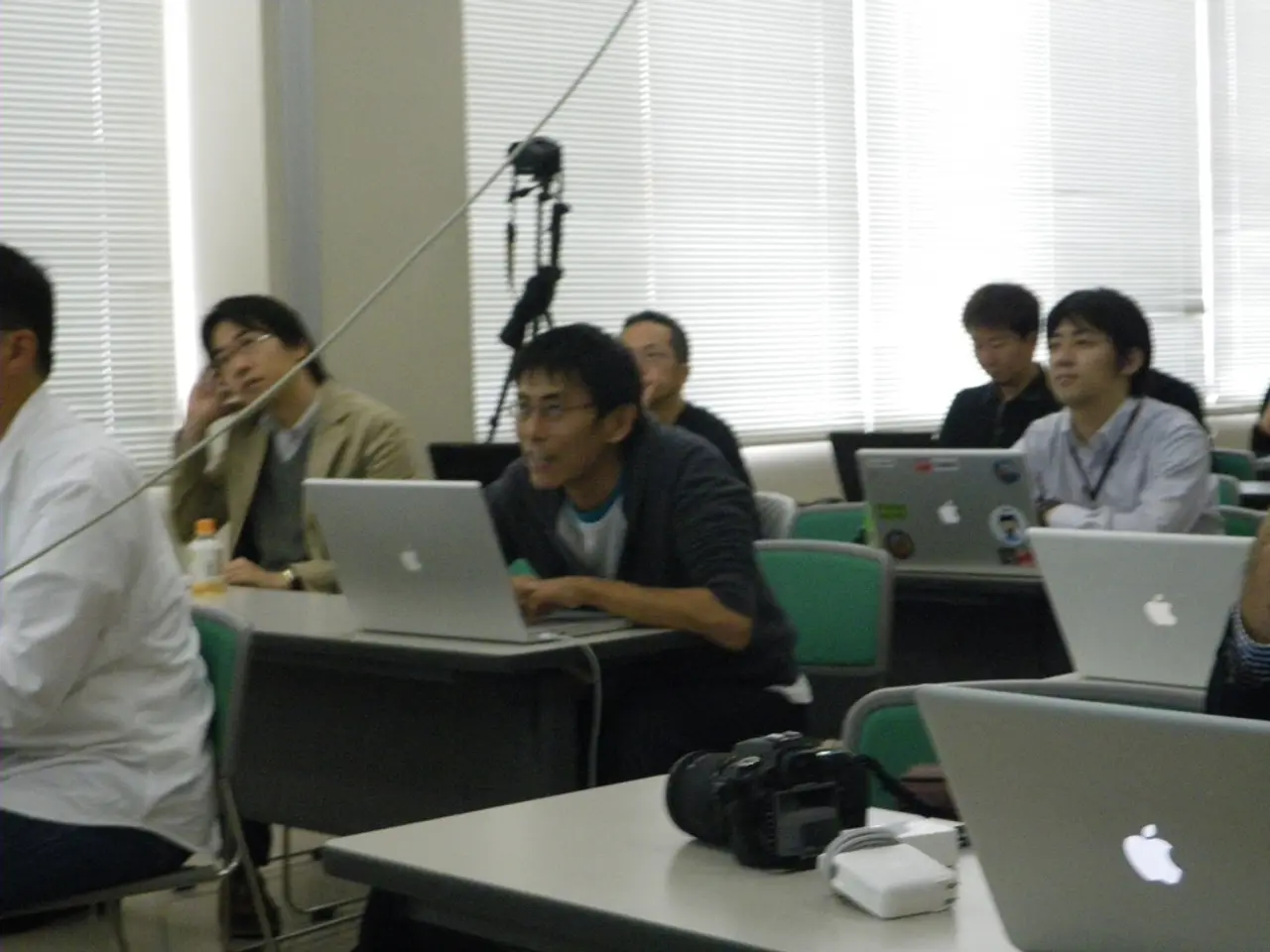Exploration of Information Gathering Methods in Relation to Augmented Reality (AR)
In the modern industrial landscape, augmented reality (AR) is making a significant impact, revolutionizing the way knowledge is acquired, maintained, and shared. This transformative technology is driving faster, more accurate decisions, reducing human errors, and enhancing productivity.
AR offers frontline workers the ability to access contextualized, real-time information overlaid directly on physical equipment. This immediate access to essential data enables faster, more accurate decisions, reducing human errors by up to 90%. The technology facilitates interactive work instructions, accessible through AR headsets, smartphones, or tablets, combined with AI-based computer vision to identify machinery and deliver precise guidance for repairs or maintenance.
In the realm of job training, AR provides immersive, hands-on learning experiences. For instance, AR-enabled welding helmets help trainees improve technique while minimizing consumables and waste. This immersive approach leads to faster skill acquisition and safer, more effective training processes. Moreover, AR captures and preserves the expertise of retiring workers, enabling remote mentoring and ensuring consistent performance standards across the workforce.
From a maintenance and repair perspective, AR integrated with digital twins—virtual replicas of physical assets—allows workers to visualize equipment conditions, predict failures, and optimize operations without disrupting actual production. Digital twins combined with AR provide real-time status and performance metrics, enabling predictive maintenance and reducing downtime. AI-driven AR applications simulate manufacturing workflows and maintenance tasks, allowing engineers and technicians to test solutions virtually before applying them on the shop floor, thus reducing costly errors and inefficiencies.
AR also fosters collaboration across geographies, where experts can remotely guide on-site workers in complex troubleshooting or commissioning, effectively democratizing specialized industrial knowledge and accelerating problem resolution.
The benefits of AR extend beyond these areas. It supports overall operational efficiency, safety, and sustainability by integrating AR, AI, IIoT, and cloud technologies into industrial workflows. This convergence has made industrial operations more agile, cost-effective, and knowledge-driven, fundamentally shifting how the workforce learns, maintains assets, and collaborates in complex environments.
The use of AR technology is backed by science, as shown in a recent study on 68 students. The study demonstrated that AR aids in fostering conceptual knowledge, providing a dynamic alternative to conventional training methods. With the help of AR, workers can hone skills necessary for the job in risk-free situations and scenarios, making training more effective and efficient.
In essence, AR is a game-changer for the industrial sector, improving knowledge acquisition, enhancing maintenance and repair accuracy and efficiency, transforming job training, enabling remote expert assistance and collaboration, and supporting overall operational efficiency, safety, and sustainability. This technological advancement is set to redefine the future of industrial operations, making them more agile, cost-effective, and knowledge-driven.
- In the realm of enterprise, AR technology enhances productivity by offering frontline workers immediate access to contextualized, real-time information, reducing human errors by up to 90%.
- This transformative technology is integrated with AI to facilitate interactive work instructions, providing a more efficient approach to job training and hands-on learning experiences.
- AR integrated with digital twins allows maintenance workers to visualize equipment conditions, predict failures, and optimize operations, reducing downtime and promoting predictive maintenance.
- AI-driven AR applications are used to simulate manufacturing workflows and maintenance tasks, minimizing costly errors and inefficiencies in the manufacturing sector.
- The use of AR fosters collaboration across geographies, enabling remote expert guidance and democratizing specialized industrial knowledge, thereby accelerating problem resolution.
- The benefits of AR extend beyond operational efficiency, safety, and sustainability, as demonstrated in a recent study, which shows that AR aids in fostering conceptual knowledge and making training more effective and efficient.




